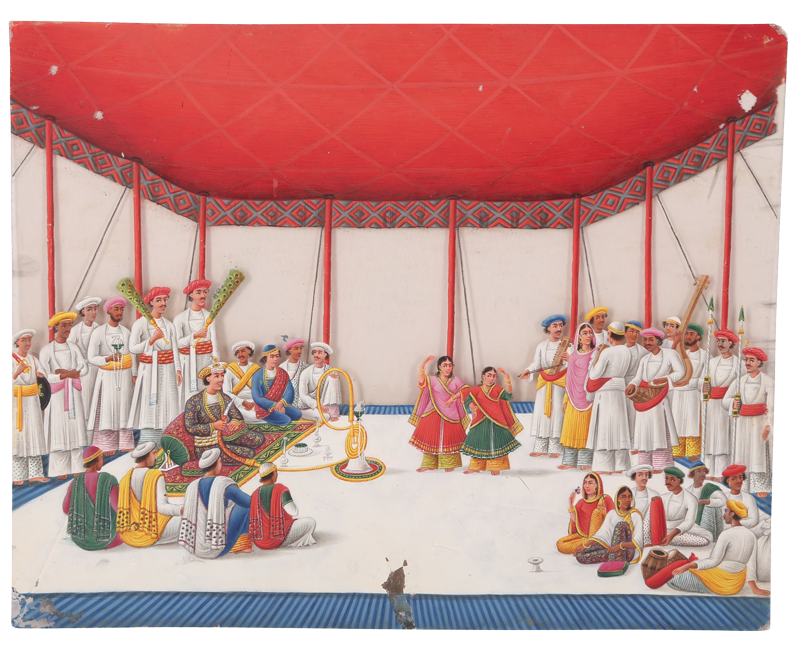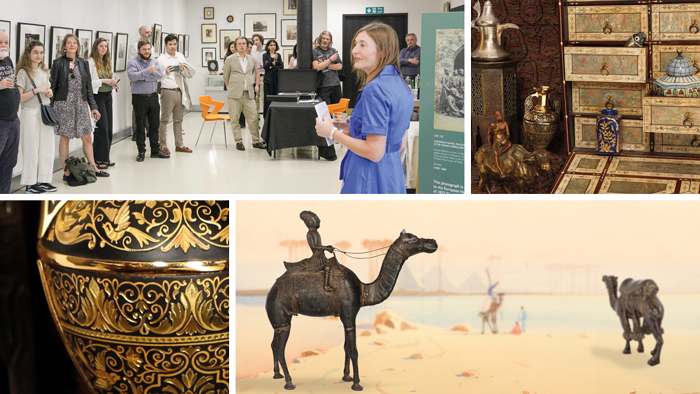A MICA PAINTING OF AN ENTERTAINMENT SCENE WITH MUSICIANS AND DANCERS
Murshidabad, West Bengal, Eastern India, ca. 1820 - 1840
Opaque pigments on mica, the large panel in horizontal format depicting a ruler seated on a gold-embroidered floorspread, smoking from a huqqa (waterpipe) whilst being entertained by a pair of female dancers accompanied by a large crowd of musicians with classical Indian musical instruments including dholak (drums), and stringed instruments like a sarangi and a sitar, the scene taking place under a vermilion red tent suggesting an outdoor setting, mounted on a white cardboard frame, 22.6cm x 18cm.
The tradition of mica painting was well-practiced in Murshidabad since the late 18th century. Here, local artists had not only an abundance of material, mostly derived from Chota Nagpur, to the west of Murshidabad, but also a long-standing experience in working with this mineral. Indeed, Murshidabad artists were renowned for their beautiful and extravagant mica lamps and ornamental constructions, mainly built for the celebrations of Muslim festivals. When the royal patronage of the local Nawabs started declining, the local painters sought new sources of income and employed their techniques to paint autochthonous subjects and daily life scenes as export goods for Western travellers, who appreciated them greatly (Mildred Archer, Company Drawings in the India Office Library, 1972, p. 61).
For a useful comparison with very similar mica paintings depicting ceremonies and outdoor processions and attributed to the same period as ours, please see Christie's New York, The Collection of Paul F. Walter, 21 - 28 September 2017, lot 661; and more recently, Christie's London, 25 June 2020, lot 108.




